The dynamic capital city of the Sichuan province is Chengdu. Chengdu effortlessly blends modern innovation with its rich historical heritage. As the culinary epicenter of fiery Sichuan cuisine, Chengdu is the home of the iconic giant panda. Chengdu has an array of experiences that captivate every type of traveler. This article is a guide of the mesmerizing and unique spots of Chengdu that should be visited in 2025. These destinations include ancient temples, cultural landmarks, scenic parks, and modern urban development showcases. These trips capture the essence of Chengdu’s charm, making the city one of China’s most dynamic and alluring cities. These highlights guarantee Chengdu has something mesmerizing for every traveler, whether they are a history lover, foodie, or a nature lover.
What are the best places for panda lovers to visit in Chengdu?

Traveling to Chengdu: Chengdu Research Base of Giant Panda Breeding
The research center has also created an entire museum dedicated to pandas, filled with educational materials and videos about the life and story of the giant pandas and conservation issues. In addition to the numerous research and conservation projects at the panda base, teaching and other forms of outreach take place. These aims are compatible with the Base’s capsules that seek to increase living conditions and reduce poverty throughout the community. The surrounding bamboo forests help to gain further information on the species’ biology and conservation obstacles. Visitors are also free to access the base facilities and observe the life of giant pandas throughout the week. It is advisable to reach in early morning as that is when the pandas are most energetic.
The Educational Value and Engagement of the Dujiangyan Panda Base
You can find an interactive experience when you walk into the Dujiangyan Panda Base because it supports the conservation of giant pandas and allows people to interact with them. This particular base is famous for its panda care and rehabilitation programs, including experiences such as being a panda keeper for a day, which allows visitors to understand more about a panda’s diet, shelter, and medical care. One of the primary goals of the base is to aid in the rescue and training of pandas so that they can be relocated into protected wilderness zones, making it a center of significant conservation importance. The Ecology and Conservation Education Resource Center is an unparalleled capital for wildlife enthusiasts because of the remarkably seamless combination of education, conservation, and natural sceneries.
Giant Panda National Park: Conservation and Education
Giant panda furcated habitats aim to promote biodiversity in protected areas, and this specific zoological park targets enlarged coverage. The park lies on over 10,000 square miles across three provinces: Sichuan, Shaanxi, and Gansu, and the advanced system is designed to monitor panda populations, forest health, deforestation, threats like poachers, and critical ecosystems. The Giants panda is a unique species of particular interest to the world, and sponsored education programs to help locals understand the correlation between ecological imbalance and the furcated panda population. Widespread public education is needed to combine innovation and sponsor modern practices to prevent endangered species.
Which historical sites should I include in my Chengdu itinerary?
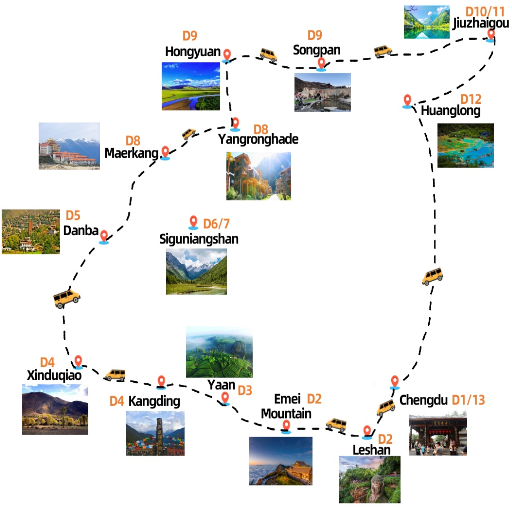
Wenshu Monastery: A spiritual journey through time
The Wenshu Monastery, or Wenshu Yuan Monastery as it is sometimes referred to, is a historical landmark in Chengdu that is lauded for its cultural significance and exquisite architecture. As one of the largest and most well-preserved Buddhist temples in Chengdu, it dates back to the Tang Dynasty. The magnificent carved wooden structures, beautiful lawns, and more than 300 cultural relics such as paintings, sutras, and calligraphy make the monastery a tourism hotspot. Apart from being the home of the famous Wenshu Pagoda which provides an excellent environment for meditation and self-reflection, the monastery is perfect for history lovers or anyone looking for peace.
Jinsha Site Museum: Discovery of Chengdu’s History
The history and culture of the ancient Shu Kingdom with roots extending well over 3000 years into the past, is on display at the Jinsha Site Museum. Opened to the public in 2001, the archaeological site contains astonishing artifacts, including gold and jade pieces, bronzes, and ivory. The golden Sunbird, a celebrated icon of cultured heritage, and the collection of ceremonial utensils alongside the other relevant artifact,s mark the rampant social and spiritual activities of the region. Visitors to the museum get to experience one of the most important archaeological find in China through modern exhibition systems and preserved excavation sites.
Du Fu Thatched Cottage: A Look into Literary Achievements
The memorial of the great Chinese poet Du Fu of the Tang Dynasty is well known as Du Fu Thatched Cottage, located in Chengdu. The place bears significance historically as it is where Du Fu wrote more than 240 of his renowned poems while searching for shelter during a tumultuous time. The cottage complex features reconstructed thatched huts, a lush garden, and a museum that honors the illustrious poet. It helps to preserve the culture of poetry during the Tang Dynasty and gives context to Du Fu’s poetry, which embodies themes of struggle, hope, and compassion. Currently, the site serves as an educational center and a cultural place of interest, allowing people to understand ancient Chinese literature better.
What are the must-try culinary experiences in Chengdu?
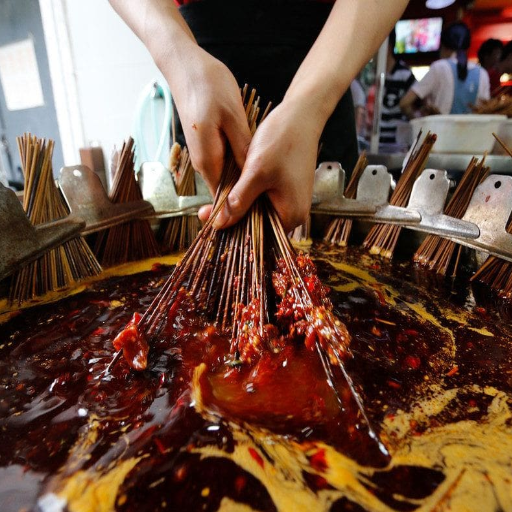
Sichuan hot pot is savored at Chengdu’s finest restaurants.
Chengdu is famous for its food, and its hot pot is a unique experience. One such place is Laoma, an acclaimed historic restaurant famous for its deep broths and choice of ingredients. Yet another option is Shu Jiu Xiang, renowned for its flavors, comprehensive spice options, and traditional dining setting. Tan’s Fish offers innovative broth and fresh seafood for those seeking a contemporary approach, making it a favorite for visitors and locals. These venues serve hot pots concerning the bold and spicy nature of Sichuan cuisine.
Exploring Jinli Old Street: A food lover’s paradise
The Old Jinli Street in Chengdu is an exuberant center that is filled with historical jewels and is deliciously appealing. The street is famous for its beautiful traditional buildings and lively mood, and features a wide variety of sweet and spicy snacks like Dan Dan Mian, Tian Shui Mian, and Shu Bao, as well as sesame cakes. Tourists can enjoy real ethnic fast food while appreciating the rich heritage of this region. Jinli also has numerous teahouses, handcraft shops, and live performers, further enhancing the experience and giving a new meaning to the term ‘food tour.’ It is a well-known spot for many locals and travelers, making it a central spot for anyone who loves food.
Tea house culture: In Chengdu, exploring the city’s historic beverage industry landscape
The local sodality in Chengdu has a robust tea house culture that serves more than just tea. Tea houses in the past were community gathering places where people came to share news, unwind, and even sell or buy services. The city has a reputation for variety in its tea offerings, such as jasmine tea, green tea, and flower tea, which is served in Taiwan cups. New teahouses still incorporate aspects of Chengdu’s history but they also encourage relaxing in the city’s busy atmosphere. Famous teahouses, including Heming Teahouse located at People’s Park, serve traditional Chengdu tea drinking customs and let tourists understand an essential chapter of Chengdu history, thus bringing life to the local culture.
Which modern attractions showcase Chengdu’s urban development?
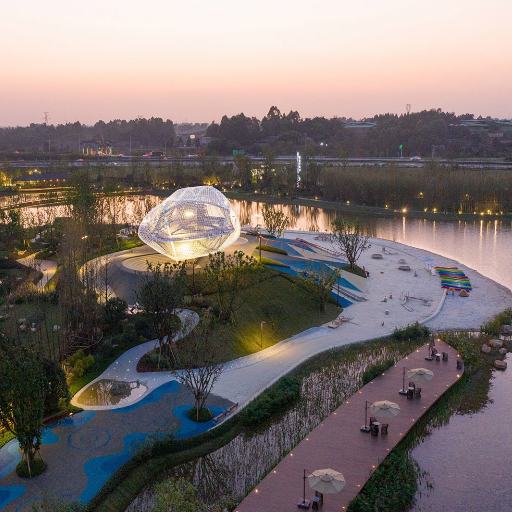
Tianfu Square: the center of Chengdu today
Tianfu Square’s central location in Chengdu is a testament to the city’s urban growth and modernization. The Square is accompanied by landmarks such as the Sichuan Science and Technology Museum and the ancient Sino-Modern Commercial Address, which show the city’s architectural advancement. Chenfu Square also includes large fountains, light shows, and open public spaces that host cultural celebrations and events, painting Chengdu as a modern-day metropolitan city.
Chengduahi Museum: Reliving local culture and history
The Chengdu Museum is a short distance away from Tianfu Square and holds a rich collection of the region’s past. The carefully designed selection of artifacts, highlighting the ancient Shu civilization and the city’s evolutionary changes, gives a complete overview of the Sichuan’s narrative. The Chengdu Museum also utilizes modern technology, such as interactive displays, to deliver the information, making it a must-see site for someone wanting to know more about the cultural history of Chengdu.
Shopping Malls and Districts in Chengdu and Their Significance
Chengdu offers simple yet eye-catching shopping sites incorporating contemporary and historical elements. For high-end shopping, locations such as the Tai Koo Li and IFS Mall stand out with their open-air designs boasting stylish architecture alongside an extensive collection of world-renowned luxury brands. Additionally, while Tai Koo Li facilitates the natural integration of the surrounding urban space, IFS Mall incorporates smart parking systems, energy-efficient lighting, and state-of-the-art features like digital directories and climate control systems, further enhancing its appeal.
Chengdu offers Kunzaai Alley and Jinli Ancient Street, giving visitors a chance to indulge in Sichuan’s culinary heritage through Sichuan’s intricately crafted silk garments, snacks, and traditional artisan tools.
Significant technical parameters that distinguish the shopping sites are their integration with transportation, customer experience optimization, and accessibility. For example, the IFS Mall’s seamless underground Chengdu metro access and energy-efficient climate control systems and lighting promote foot traffic and convenience, enhancing the shopping experience.
Tai Koo Li and IFS Malls, alongside other shopping districts, ensure world-class urban development within Chengdu through the Athene designer hotspot and provide an unparalleled meshing of modern Sichuan culture, containing business and leisure in the district.
What are the best day trips from Chengdu?
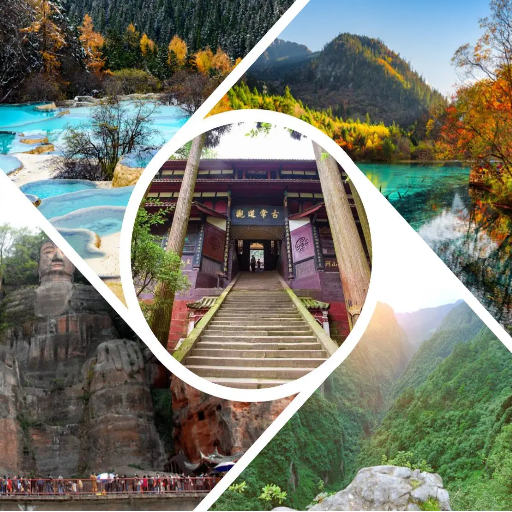
Exploring the Leshan Giant Buddha: A UNESCO World Heritage Site
During Tang Dynasty, a cliff was leveled to sculpt the Leshan Giant Buddha. His 71-meter tall stature makes Leshan the tallest stone statue of Buddha in the world, even today. To calm the rough waters that threatened shipping routes, the statue was erected at the meeting point of the Min, Qingyi, and Dadu rivers. Tourists can appreciate the statue from afar by taking a boat tour or get a closer view by hiking nearby trails where the statue’s flowing robe and massive carved ears can be seen up close. The site is a must-visit near Chengdu, roughly 2 hours by high-speed train or car. It’s the perfect blend of cultural history and beautiful landscapes.
Unraveling Ancient Mysteries: Exploring the Sanxingdui Museum.
The Sanxingdui Museum in Sichuan Province has on display stunning artifacts of an ancient civilization that existed over 3000 years ago. It is famous for its bronze masks, gold intricately carved ornaments, and jade wares, giving great insight into a civilization different from the Chinese dynasties. This site, found in the 1920s and excavated in the 1980s, has uncovered large amounts of unique art and religious structures. The exhibits in two pavilions focus on the phenomenal advanced techniques in metallurgy and the unfathomed symbolism surrounding the Sanxingdui people. The museum is the center for new scientific and archaeological research on the early stages of human development in East Asia and fosters continual growth of the region’s history.
Mount Qingcheng: Taoist Mountains Getaway
Recognized as one of the world’s centers of Taoism, Mount Qingcheng in the Sichuan Province of China captivates travelers with its scenic beauty and soothing natural surroundings. This site is remarkable for various reasons, including its complex ancient history and its Romanized temples, such as Jianfu and Shangqing. Qingcheng combines spirituality and nature, attracting a plethora of tourists. Besides the incredible sight, this mountain also holds two distinct sections: the Back Mountain, which features breathtaking views beyond any description; the hiking trails; and the cultural Front Mountain. This mountain serves as an incredible example of surrendering to the loving embrace of nature – a fundamental idea of Taoist philosophy. These are the reasons why it has consistently been chosen as a UNESCO world heritage site.
How can I experience Chengdu’s unique cultural offerings?
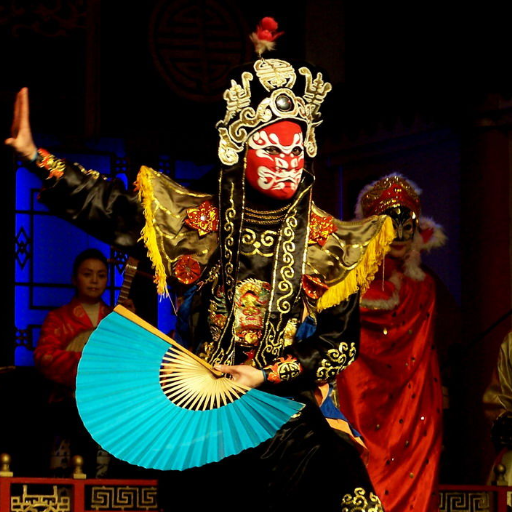
Sichuan Opera Fire Breathing And Face Changing Performance
Watching a Sichuan Opera is a dramatic display of the cultural heritage of Chengdu. Driven by the emulsion of Chengdu culture, this art form is famous for its elaborate costumes, dramatic and fierce narration, and other unique features like multi-faceted facial expressions, fire breathing, and many more. Such performances showcase the artistry and history behind the Sichuan Opera and provide visitors with a one-in-a-million experience in Chengdu.
Taoism At The Heart Of Chengdu: The Qingyang Palace
Also called Green Ram Temple, Qingyang Palace is one of China’s most famous Taoist sites and an important historical site in Chengdu. The temple complex, situated around Chengdu city center, was built during the Tang Dynasty and features exceptional traditional architecture, intricate carvings, and quiet, peaceful gardens. Visitors may also enjoy the well-known Eight Diagrams Pavilion, which illustrates Taoist cosmology and allows them to reflect on Xin’xi philosophy. Giving a glimpse of Chengdu Taoist isolation, the Qingyang Palace not only serves as a spiritual sanctuary but also serves military spiritual culture and philosophy.
Discover Kuanzhai Alley: How Chengdu Balances Diversity with Tradition
Wide and Narrow Alley, or Kuanzhai Alley, is a historic district famous for its architectural fusion of the Qing dynasty and modern-day culture. The district is made up of three streets – Wide Alley (Kuan Xiangzi), Narrow Alley (Zhai Xiangzi), and Well Alley (Jing Xiangzi) which are situated parallel to each other, and it is one of the best preserved areas of Chengdu. Travelers can walk through the ancient courtyards and tea houses that represent the city’s splendid past, as well as visit stylish shops and cafes and enjoy street performances that signal the vibrancy of modern-day Chengdu. This quarter is a cultural hotspot in the city where heritage and contemporary living beautifully coexist and aptly portrays the ever-changing face of Chengdu.
Reference sources
Frequently Asked Questions (FAQs)
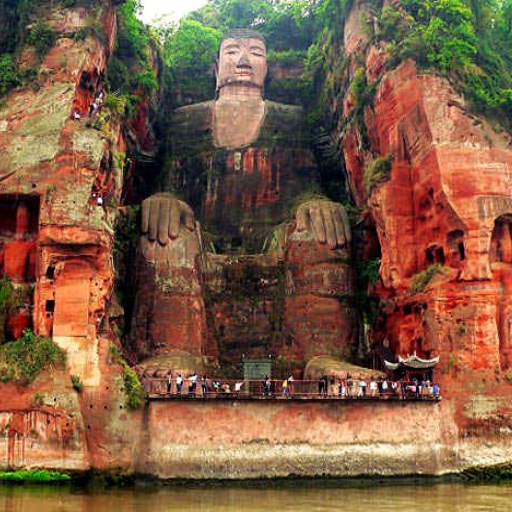
Q: What are the top attractions in Chengdu?
A: Some of the most popular attractions in Chengdu include the Chengdu Panda Base, Wuhou Temple, Jinli Pedestrian Street, and the Leshan Giant Buddha. These sites offer a mix of natural beauty, cultural heritage, and unique experiences that showcase the best of Chengdu’s attractions.
Q: When is the best time to visit Chengdu?
A: The best time to visit Chengdu is during spring (March to May) and autumn (September to November). These seasons offer pleasant weather and comfortable temperatures for sightseeing. Chengdu has a subtropical climate, so summers can be hot and humid, while winters are mild but often overcast.
Q: What are some must-try foods in Chengdu?
A: Chengdu is renowned for its spicy Sichuan cuisine. Some must-try Chengdu foods include hot pot, mapo tofu, kung pao chicken, and dan dan noodles. Don’t miss the opportunity to explore the city’s street food scene and experience the unique flavors that make Chengdu one of China’s top food destinations.
Q: How many days should I spend in Chengdu?
A: To fully explore Chengdu and its surrounding areas, plan to spend at least 3-4 days in the city. This will give you enough time to visit the main attractions, experience the local culture, and perhaps take a day trip to nearby sites like the Leshan Giant Buddha or Mount Qingcheng.
Q: What are some things to do in Chengdu for nature lovers?
A: Nature enthusiasts visiting Chengdu can enjoy several activities, including a trip to the Chengdu Panda Base to see giant pandas in their natural habitat. You can also explore the beautiful landscapes around Chengdu, such as the Jiuzhaigou Valley or Huanglong National Park, known for their stunning natural beauty and diverse ecosystems.
Q: Are there any interesting places to visit around Chengdu?
A: Yes, there are several fascinating places to visit around Chengdu. Some popular destinations include the Leshan Giant Buddha, Mount Qingcheng (a UNESCO World Heritage site), the Dujiangyan Irrigation System, and the Sanxingdui Museum. These sites offer a mix of historical, cultural, and natural attractions that complement your Chengdu tour.
Q: What are some unique things to do in Chengdu to experience local culture?
A: To experience Chengdu’s rich culture, consider visiting a traditional tea house, watching a Sichuan Opera performance, or exploring the city’s ancient temples. You can also take a stroll through the Wide and Narrow Alleys (Kuanzhai Xiangzi) to see well-preserved Qing dynasty architecture and sample local snacks. These activities will give you a deeper understanding of Chengdu’s cultural heritage.
Q: What is the best way to sightsee in Chengdu?
A: The best way to sightsee in Chengdu is to combine walking tours with public transportation. Many of the city’s attractions are centrally located and can be easily explored on foot. For destinations further afield, Chengdu has an efficient metro system and bus network. Consider joining a guided tour for a more in-depth understanding of the city’s history and culture.